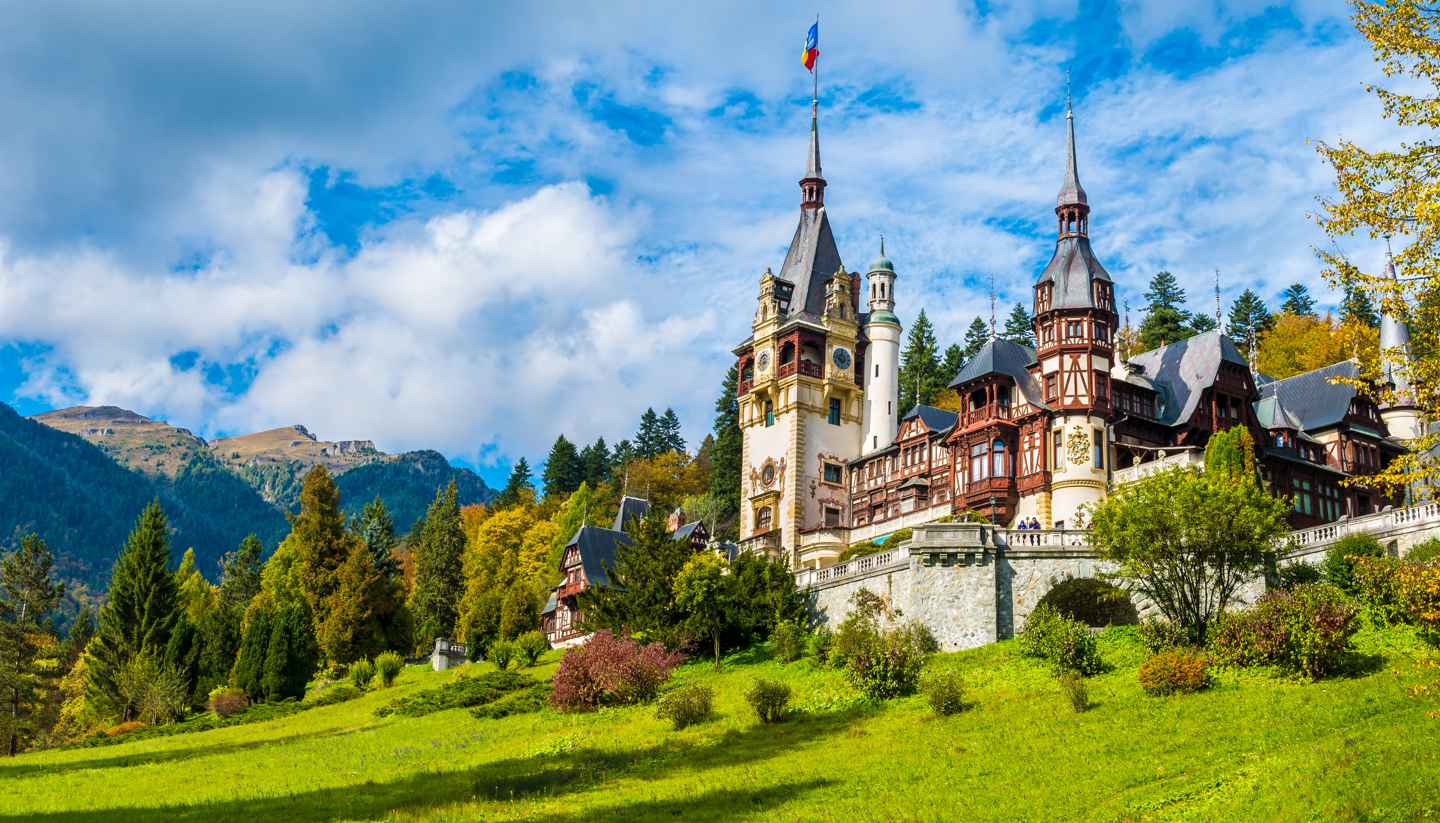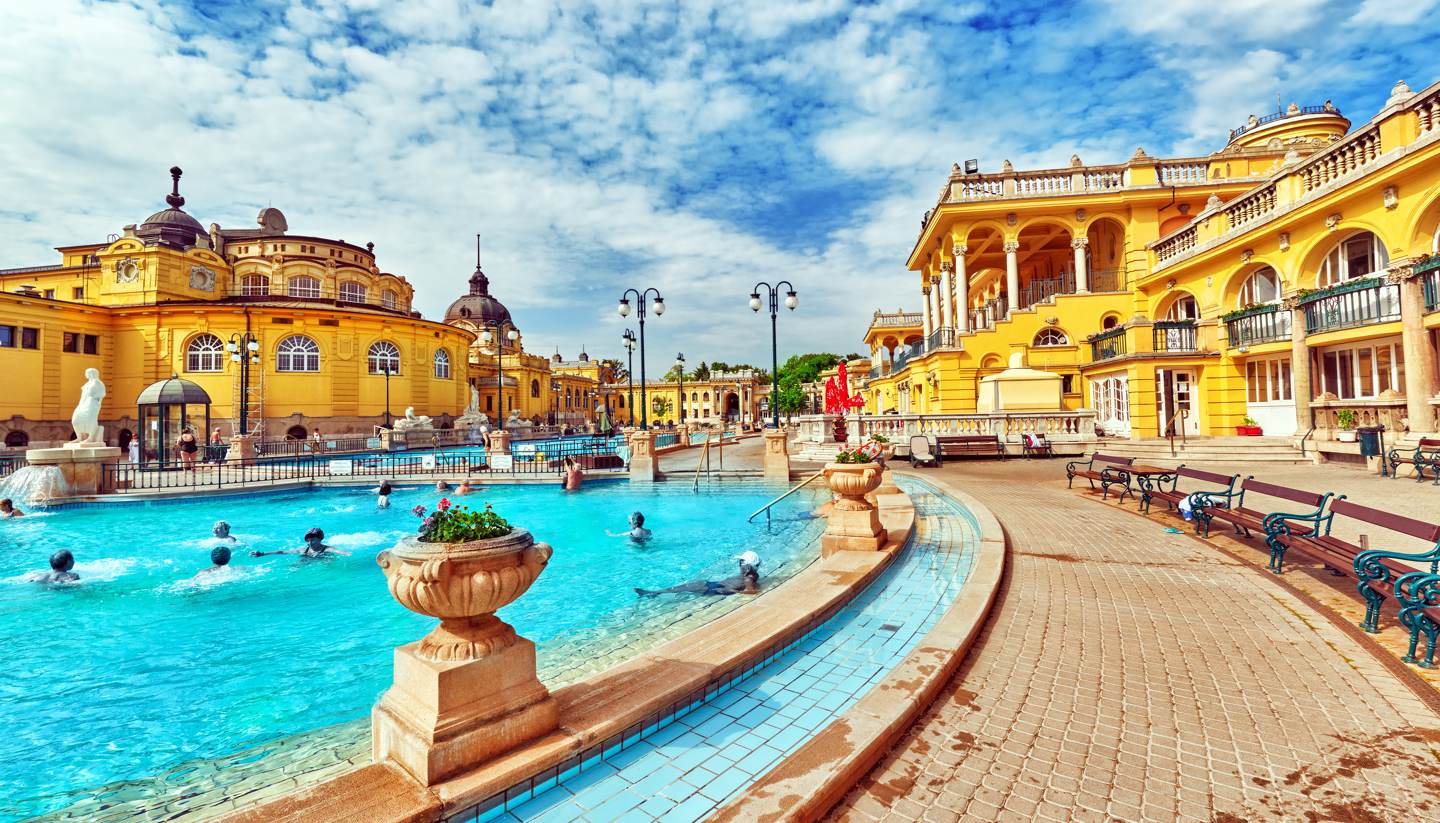Romania Food and Drink
Romanian cuisine is an eclectic mix of different cultural influences, with elements from Turkey, Germany, Hungary all easily discernible. Traditionally, Romanian food tends to be stodgy and meat-based, revolving around dishes such as ciolan afumat (smoked pork knuckle with beans), Mămăligă (cornmeal polenta) and carnaţi de pleşcoi (mutton sausages).Breakfasts almost always include eggs, either soft-boiled, hard-boiled, fried or scrambled, and omelettes filled with either cheese, ham or mushrooms are also frequently served.
The highlight of a traditional Romanian restaurant meal is usually the appetiser dish, most likely a bowl of sour soup called ciorbă. Pork is the main meat used in Romanian cuisine while cabbage is a culinary favourite and is often used in soups and salads.
In rural areas, it’s unusual to find restaurants serving anything other than traditional Romanian cuisine. In Bucharest, however, and in bigger cities such as Cluj-Napoca, the culinary scene is far more international, plus there are the odd gastronomic gems where the standard far surpasses the prices.
Specialities
• Ciorbă (sour soup) is traditional Romanian. It has a few varieties including Ciorbă de burtă (tripe soup), Ciorbă de peşte (fish soup), and Ciorbă țărănească (peasant soup made with vegetables and any kind of meat).
• Sarmale - widely considered as the national dish, it's made with minced meat with rice and wrapped in either pickled cabbage leaves or vine leaves.
• Tochitură - stew made from pork (sometimes beef), traditionally served with mămăligă (mashed cornmeal, a local staple).
• Pârjoale - minced pork mixed with herbs, rolled in bread crumbs and fried in hot oil.
• Amandine - Romanian chocolate sponge cake with almond and chocolate filling.
• Papanași - like a fried doughnut, usually filled with soft cheese and sweet cream inside and topped with cherry or blueberry preserve.
• Țuică - a plum brandy, traditionally prepared at home from early October to early December. Turț is a double-distilled varity produced in northwest Romania.
Things to know
Vegetarians had difficulties a decade ago but with many gastropubs offering vegetarian options, you can eat well in big cities like Bucharest. In rural areas there may be challenges as meat is often used to stuff vegetables. Try asking for mancare de post – food suitable for fasting, which is free from animal products.
Although there are inexpensive self-service snack bars, table service is the norm. There are no licensing hours.
Tipping
A 5 to 10% tip is customary in restaurants.
Drinking age
The legal age for drinking in a bar is 18.
Regional drinks
• Tuicã (plum brandy) and Tuicã de Bihor (strong brandy, generally known as palinca).
• Pinot noir, cabernet sauvignon, riesling, pinot gris and chardonnay from the Murfatlar vineyards.
• Grasa and feteasa (wine from Moldavia's Cotnari vineyards).
• Sparkling wines.
• Glühwein (mulled wine).




